Understanding Tarantula Hydration Needs
Caring for a tarantula involves understanding its specific needs, and hydration is paramount to its health and well-being. Tarantulas, like all living creatures, require water to survive. They obtain this crucial element from their environment, primarily through the food they consume and the humidity of their enclosure. Dehydration in tarantulas can quickly lead to serious health problems, impacting their ability to molt, eat, and move around normally. Therefore, maintaining the right level of hydration is a key component of responsible tarantula ownership. This guide will provide you with essential knowledge on how to effectively hydrate your tarantula and ensure its long, healthy life.
Why Dehydration Matters for Tarantulas
Dehydration can be lethal for tarantulas. It weakens their immune system, making them more susceptible to infections and diseases. It also affects their molting process, which is essential for growth. A dehydrated tarantula will have difficulty shedding its exoskeleton, potentially leading to a failed molt, which can be fatal. In addition, a dehydrated tarantula will likely lose its appetite, making it more difficult to feed and sustain the spider. Keeping your tarantula adequately hydrated is not just about providing water; it’s a critical aspect of their overall health, allowing them to thrive in your care.
Signs of Dehydration in Your Tarantula
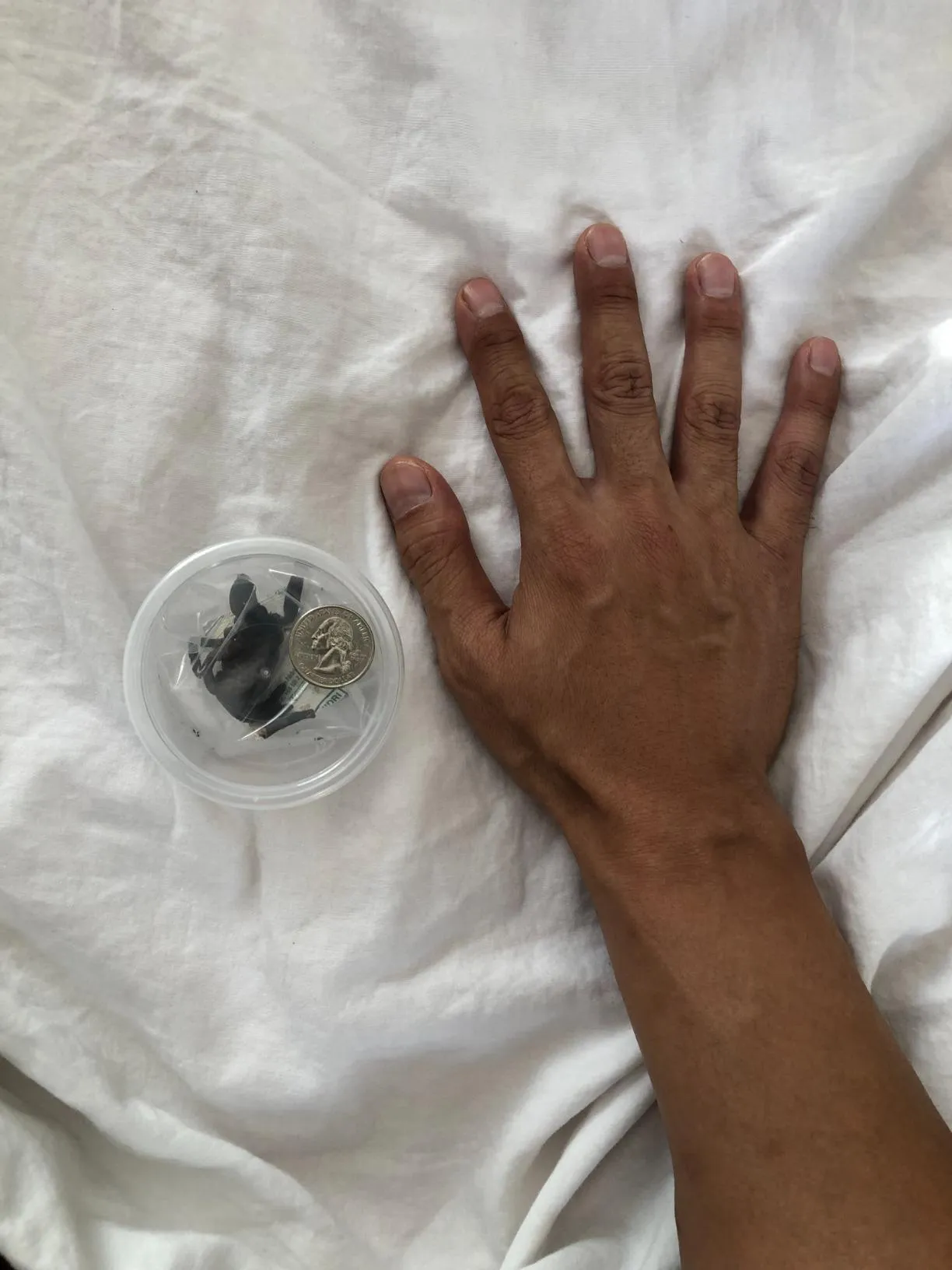
Recognizing the signs of dehydration is crucial for timely intervention. Some common indicators include a shriveled or wrinkled abdomen, which will appear deflated. The tarantula might also exhibit a loss of appetite, lethargy, and reluctance to move. You may notice the tarantula spending extended periods near the water dish if available or staying in a corner of the enclosure. In severe cases, the tarantula may exhibit tremors or paralysis. If you observe any of these signs, it is essential to take immediate action to rehydrate your pet. Early detection and swift action can significantly improve your tarantula’s chances of recovery.
The Importance of Humidity
Humidity plays a vital role in keeping your tarantula hydrated. Tarantulas absorb moisture through their exoskeleton. Humidity levels must be kept within a specific range, depending on the species. Desert species require less humidity than tropical ones. Properly regulated humidity helps tarantulas retain water, facilitating healthy molting and overall vitality. Regularly monitor the humidity levels using a hygrometer and make adjustments by misting the enclosure or adding more damp substrate, as needed. Maintaining optimal humidity conditions will support your tarantula’s health and ensure its long-term well-being.
Top 5 Tips to Rehydrate a Tarantula
Tip 1 Provide a Water Dish
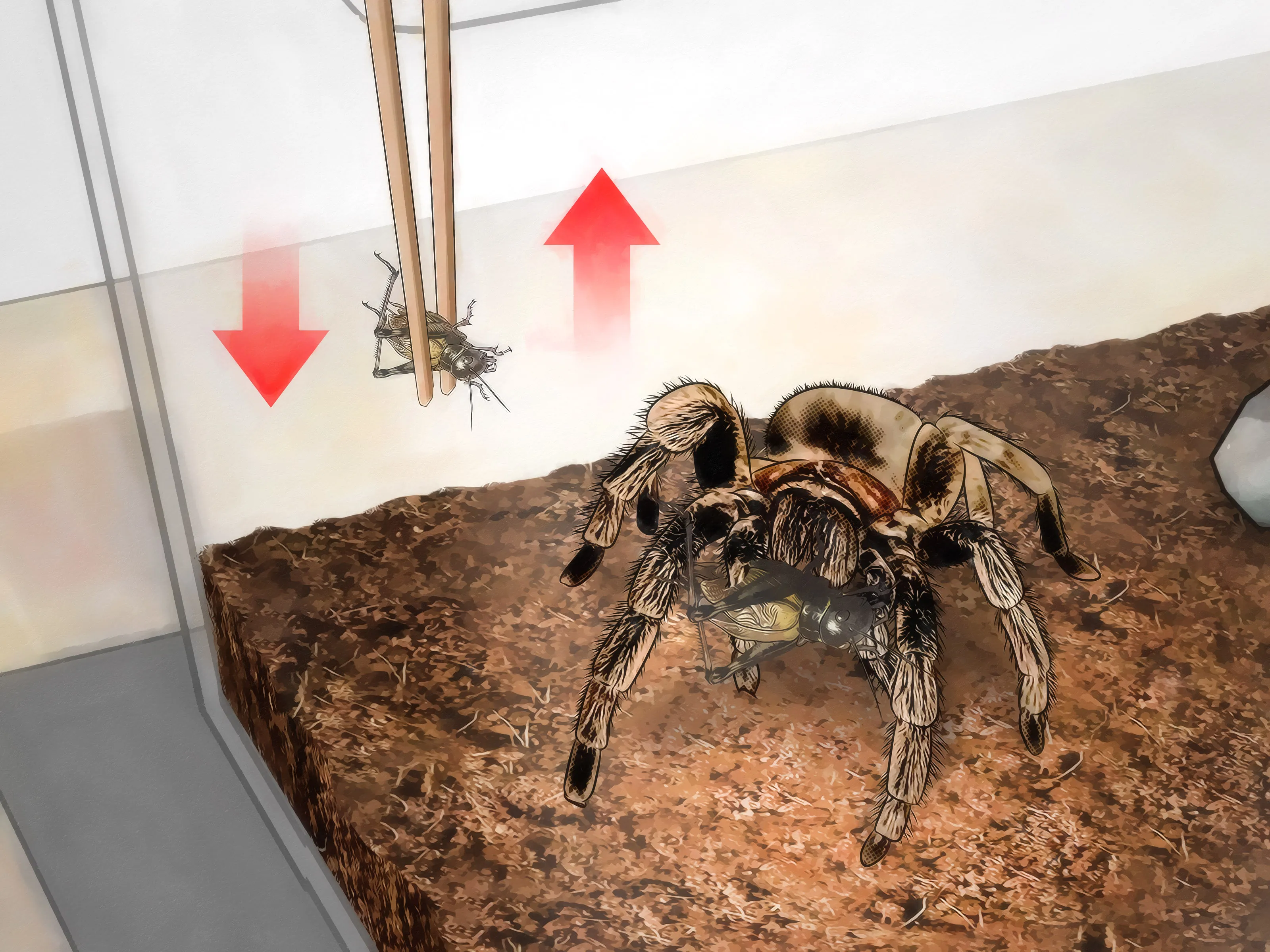
A readily accessible water dish is a fundamental requirement for tarantula hydration. The dish should be shallow to prevent the tarantula from drowning, and it should be appropriately sized for your spider, ensuring easy access. The water should be clean and fresh, so regularly replace the water, ideally daily or every other day. This is a simple yet crucial step to help your tarantula stay hydrated.
Water Dish Setup
Select a water dish made from a non-toxic material like plastic or ceramic. Place the dish on the ground, preferably away from the heat source, so the water doesn’t evaporate quickly. Consider adding small pebbles or marbles to the dish to provide a safe escape for the tarantula if it accidentally falls in. Ensure the dish is stable and won’t tip over easily, preventing unnecessary stress for your spider.
Water Quality
Use fresh, dechlorinated water for your tarantula. Tap water often contains chlorine, which can be harmful. If using tap water, let it sit for 24 hours to allow chlorine to dissipate, or use a water conditioner designed for reptiles. Regularly clean the water dish to prevent algae growth and bacterial contamination. Always maintain the water’s cleanliness for your tarantula’s health.
Tip 2 Regular Misting

Misting the enclosure helps to raise humidity levels, providing the tarantula with water to drink and absorb through its exoskeleton. Misting is particularly important for tropical species that need higher humidity. However, avoid over-misting, which can lead to mold growth and health problems.
Misting Frequency
The frequency of misting depends on the species and the enclosure’s humidity levels. Tropical species may require daily misting, while desert species require less frequent misting, like once or twice a week. Use a hygrometer to monitor humidity levels and adjust your misting schedule accordingly. The aim is to provide a slightly humid environment without creating standing water.
Misting Techniques
Use a fine mist spray bottle to mist the enclosure gently. Direct the mist towards the sides of the enclosure, avoiding direct contact with the tarantula if possible, as this may stress the spider. Misting the substrate can also help to maintain humidity. Make sure the substrate isn’t overly wet and that there is adequate ventilation to prevent mold growth. Remember that the goal is to create a moist environment, not a swamp.
Tip 3 Damp Substrate
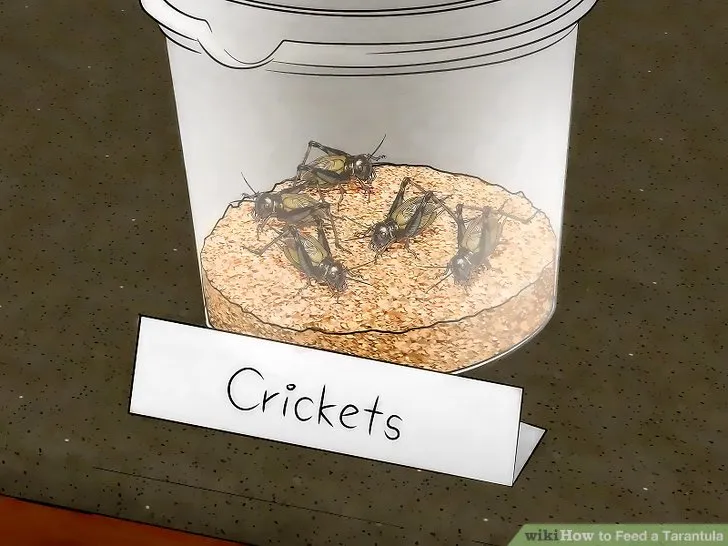
The substrate, the material at the bottom of the enclosure, also contributes to humidity. Choosing the correct substrate is vital for tarantula hydration and overall health. Some species require more humid environments than others, and the correct substrate helps meet these needs.
Substrate Types
Common substrate choices include coconut fiber, peat moss, and vermiculite. Coconut fiber is excellent for holding moisture, making it ideal for tropical species. Peat moss is another good option, while vermiculite helps to maintain humidity and absorb excess water. The substrate’s type depends on your tarantula’s needs, so choose a substrate appropriate for the species you have.
Maintaining Dampness
Dampen the substrate regularly, but avoid making it soaking wet. You can do this by gently misting the substrate or pouring a small amount of water into it. The goal is to maintain a slightly damp substrate that allows the humidity levels to remain appropriate. The substrate must be changed periodically to keep the enclosure fresh and clean, preventing the accumulation of waste, bacteria, and mites. Substrate replacement frequency varies depending on the species and enclosure size.
Tip 4 Offer Food & Water
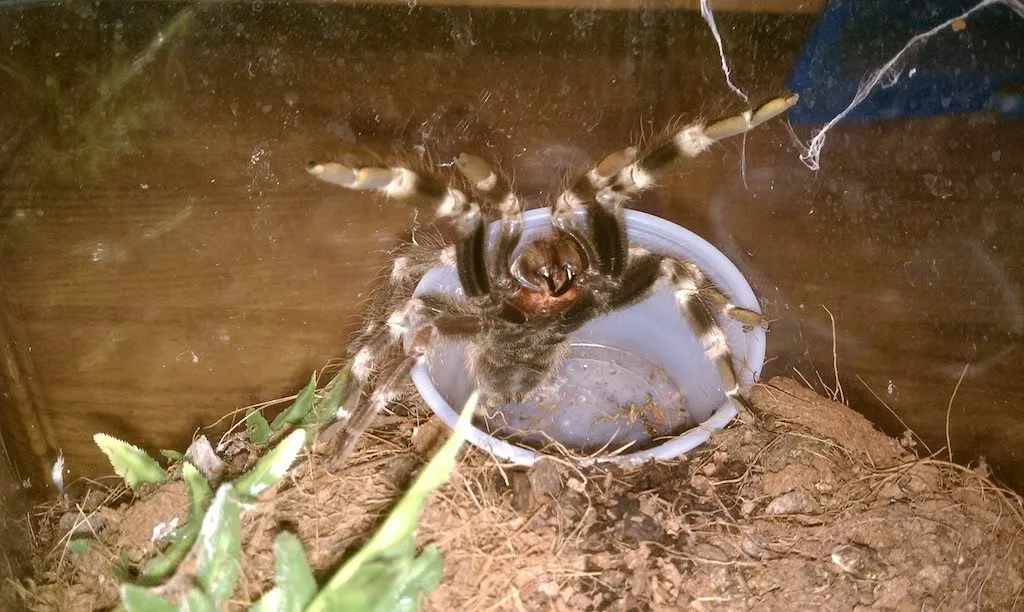
Food and water go hand in hand in keeping your tarantula hydrated. When your tarantula eats, it also gets water. Therefore, providing a varied diet of appropriate prey helps with hydration. Ensure your tarantula’s prey is properly gut-loaded before feeding, as this boosts its nutritional value, contributing to your tarantula’s overall health. Ensure that the feeder insects have access to water, too, as this will hydrate the prey and, in turn, hydrate your tarantula.
Food and Hydration
Gut-load your feeder insects with nutritious food items like fresh vegetables and fruits. This provides your tarantula with extra hydration and vitamins. Remove any uneaten prey after a short period to prevent stress on your tarantula. Also, keep the feeders in an enclosure with water sources, like water crystals or small water dishes.
Tip 5 Monitor and Adjust
Regular monitoring of your tarantula and its enclosure is essential for optimal hydration. Observation allows you to detect early signs of dehydration or excessive humidity, enabling timely intervention and adjustments.
Observing Your Tarantula
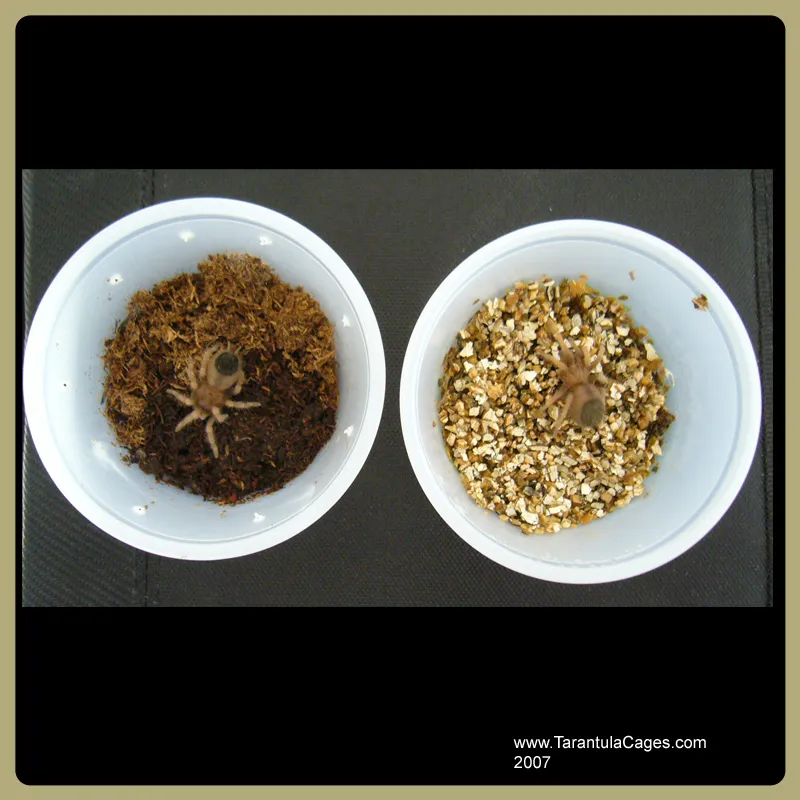
Observe your tarantula regularly for signs of dehydration, such as a shriveled abdomen, loss of appetite, and lethargy. Note its behavior, including its time spent near the water dish or any unusual movements. Also, watch for any signs of excessive humidity, such as condensation buildup or mold growth. Early detection of any health issue allows for prompt action and effective treatment.
Adjusting Hydration Based on Needs
Adjust the hydration methods based on your observations and your tarantula’s needs. If you notice signs of dehydration, increase misting frequency, ensure the water dish is always full, and consider adding more moisture to the substrate. Conversely, reduce misting and ventilation if you see signs of over-hydration, such as mold growth or a constantly wet substrate. Monitor your tarantula’s condition and adjust your approach accordingly to maintain the proper hydration levels.
Advanced Rehydration Techniques
While a water dish, misting, and proper substrate are usually sufficient, more advanced techniques can be necessary in specific situations, like severe dehydration. These techniques should be used cautiously and with knowledge.
Using a Syringe
In extreme cases, you can carefully use a syringe to provide water directly to the tarantula’s mouthparts. This requires careful technique and should only be done if your tarantula is severely dehydrated, and it is also extremely risky. Use a small, blunt-tipped syringe, and gently drip water onto the tarantula’s mouthparts. Never force the water. This method can be helpful but can also cause stress, so exercise extreme caution.
Creating a Hydration Station
A hydration station is a safe and humid area within the enclosure, such as a small, enclosed container with damp sphagnum moss or paper towels. This can encourage the tarantula to hydrate in a controlled environment. Make sure there is ample ventilation to prevent mold. This approach can be helpful for species requiring very high humidity or during molting.
Conclusion
Hydration is one of the most critical aspects of tarantula care. By understanding their needs, implementing the hydration tips provided, and consistently monitoring your tarantula’s health, you can ensure a long and healthy life for your pet. Remember that preventative measures, such as providing a water source, regular misting, and using the right substrate, are more effective and less stressful for your tarantula than treating severe dehydration. If you notice signs of dehydration, act promptly and consult with a veterinarian or experienced tarantula keeper if you have any doubts. By following these guidelines, you can provide your tarantula with the optimal environment for a long and happy life.
